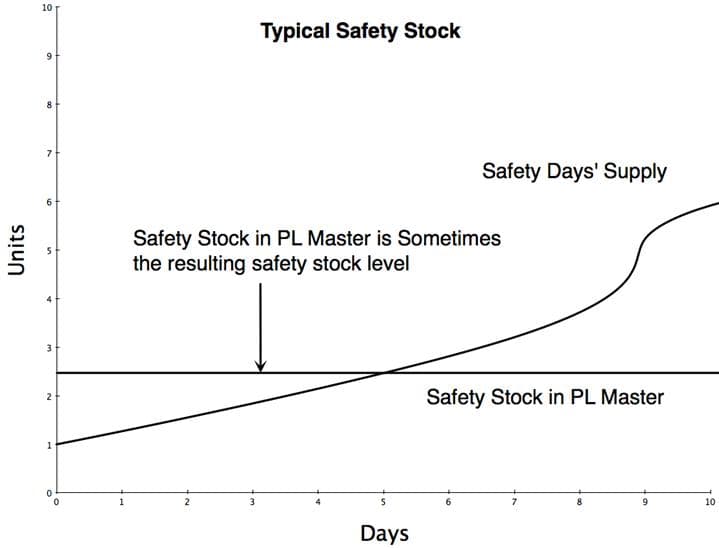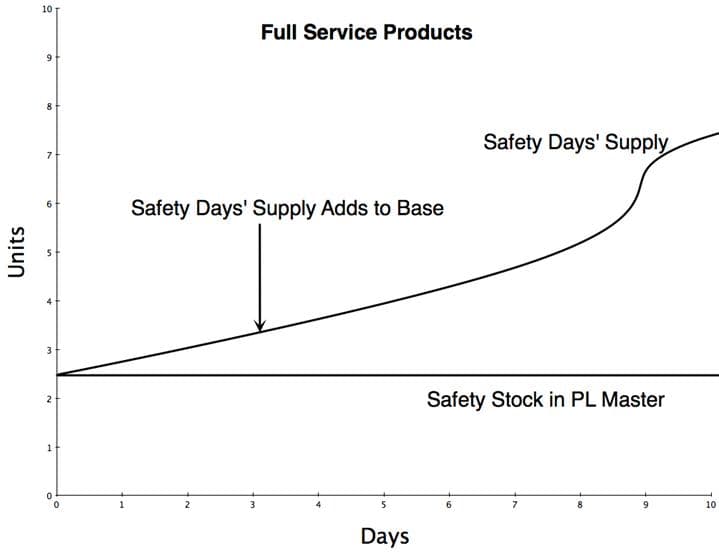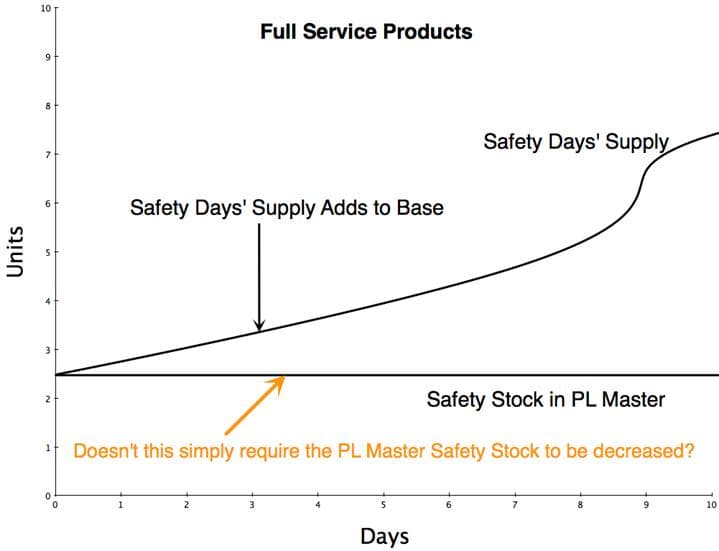How to Understand Additive Safety Stock Enhancement in APO
Executive Summary
- Safety Stock Setting at One Client
- The Reasons for the Enhancement Request
- Confusion on Safety Stock Currently
- Comfort Level
- Loss in Functionality of Safety Stock as of 7.0
- The Use of the Requested Enhancement Safety Stock Method

Introduction
This document is designed to explain why the Inventory Steering Committee has asked for an enhancement, which would add the Safety Days’ of Supply to the Safety Stock Case Quantity to arrive at a total safety stock.
Safety stock in days supply and safety stock in cases (entered into the product location master) needs to have the ability to work as an “and” statement instead of only an “or” statement. The enhancement request is based on business requirements for the inventory steering committee. The A and B SKUs with full-service volume use safety stock in days and cases and need to maintain safety stock cases with a target of days’ supply on top. This is the direction of the RSP organization regarding inventory policy.
Safety Stock Setting at One Client
At one client, most of the products are coded SZ, which means they only show the safety stock from the product location master. This was done because SM, which uses the higher Safety Days’ Supply, ceased functioning months ago. However, once SM works, the safety stock will be the max of the safety stock and the Safety Days’ Supply from the location product master (which adjusts per the forecast). Some product locations can be set up to use the SM method. This SM method is shown in the graphic below:

When the enhancement is complete, the projected safety stock will look like this for product locations coded to use this enhanced method.

However, one question would naturally arise, which is listed below:

The Reasons for the Enhancement Request
This enhancement is desired primarily to take care of some of the issues with full-service products. The idea is to keep A & B products at safety times.
Confusion on Safety Stock Currently
According to the Steering Committee, it can be confusing as to what the numbers mean when SNP performs a comparison that is the “or” between safety stock as entered in the product location master and Safety Days’ Supply. The issue is that the full-service requirement is a fixed service requirement. The safety stock calculation requirement is to have a high level of safety stock or a “base” and then to have the Safety Days’ of Supply added to this base. However, sometimes promotions change the forecast upward.
Track Record of Effectiveness: Full-service products, using a safety stock approach, which adds the safety stock in cases to the Safety Days’ Supply, have proven effective in R/3. Its previous effectiveness in R/3 has naturally led to this enhancement request to make this safety stock method available within APO/SNP.
Comfort Level
All the safety stock calculations in R/3 are comfortable for the business. Unfortunately, the approach with full-service products has had to be changed to account for SNP’s different managing safety stock ways.
Loss in Functionality of Safety Stock as of 7.0
One issue driving this request is that the functionality, which allowed the system to take the safety stock in cases or the Safety Days’ Supply, is not presently working.
The Use of the Requested Enhancement Safety Stock Method
The enhancement request is not to replace all product locations that have the SM method (higher of the two) with the additive solution, but instead to create the additive solution functionality so that it is an additional option that we can choose in the material master for those products where it is applicable. For other material location combinations, the current SM solution is relevant.
Conclusion
The request for additive safety stock for the safety stock value case quantity entered into the product location master and the safety stock in Days’ Supply is from the Inventory Steering Committee. It is based upon using R/3 safety stock functionality that has proven to work very well for full-service products.